Key Measurements for the Perfect Garage
Surprisingly, common garage dimensions have remained roughly the same since the Ford Model T began the obsession with the automobile about a hundred years ago. The T’s 134-inch length, a little more than 11 feet, is considerably shorter than the average 15-foot length of sedans now being produced.
Today’s extreme is the Rolls-Royce extended-length Phantom, slightly less than 20 feet long. Throughout the past century, garage dimensions have remained about 9 to 10 feet wide and 18 to 20 feet long per car, with a single garage door width of 8 feet. The difference in garage dimensions now is that we tend to want more space for storing our stuff along with the car.
It seems that car designers are always enlarging, shrinking and then enlarging their models again to adjust for the latest fashions and technologies, not to mention the price of gas. But there are common parameters that will help you in planning a new garage or remodeling an existing one.
If you have ever scraped your car alongside a garage door frame, you will sympathize with your ancestors, who may have driven even larger cars. Let’s take a look at the dimensions of most garage designs in the U.S. today.
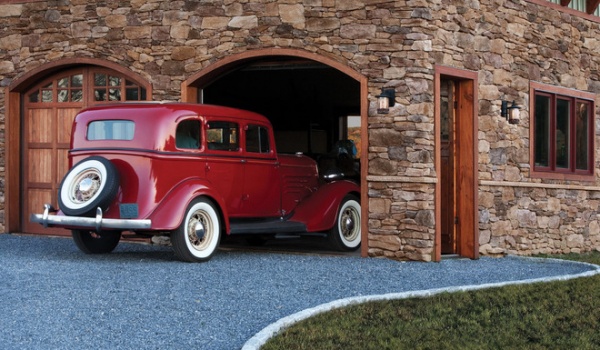
Garage Doors
Width: Single-car doors begin at 8 feet wide (2.4 meters). You can also get 9-foot-wide doors (2.7 meters), which will lessen the chance of scraping the fenders on the door frame. You will sometimes see doors narrower than this in country club developments, but those are usually for golf cart garages; they can be as narrow as 5 feet (1.5 meters).
Doors made for two cars can be as little as 14 feet wide (4.3 meters), but are more commonly 15 or 16 feet wide (4.6 or 4.9 meters).
Height: The standard garage door height is 7 feet (2.1 meters), but an 8-foot (2.4-meter) height is also available. You can get a custom height for an additional cost.
You can also customize your door design for an additional cost.
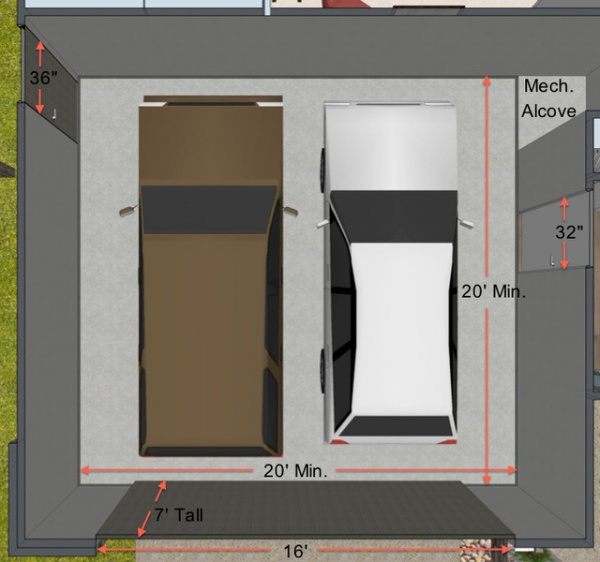
Two-Car Configuration
This cutaway plan shows how a two-car garage is commonly configured. The single 16-foot-wide (4.9-meter-wide) garage door is large enough to allow two cars to fit. It is also a good idea to have a 3-foot-wide door to the exterior on the side of the garage. As for the door going into the house from the garage, you will want it to be at least 32 inches (81 centimeters) wide.
Overall interior dimension: The dimension required by several cities in California is 10 by 20 feet (3 by 6 meters) per car, and this is the best minimum dimension for the average car. This will allow enough space for someone to open the doors and walk in front of and behind the car once it’s parked in the garage. Garage lengths of 24 feet (7.3 meters) allow cabinets or storage shelves to easily fit in front of parked cars.
Hot-water heaters and mechanical systems are often placed in the garage. If this is done, it is best to create an alcove, as has been done here, or add more depth or width to the 20-foot minimum to accommodate that equipment.
Many zoning and building codes have minimum dimensions for garages, so be certain you know those when planning your design. Local building codes also address door hardware, protection of the mechanical systems from cars, and garage door openers, so consult a design professional to be sure you are covered for these issues.
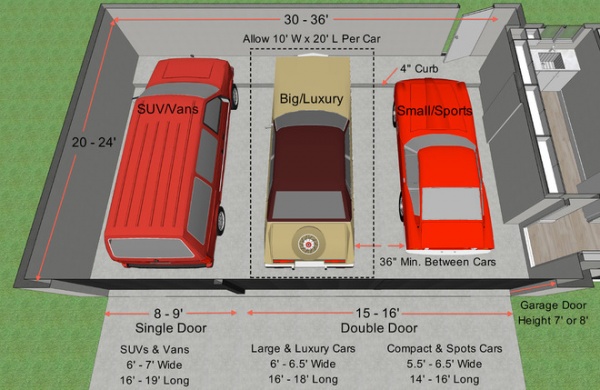
This cutaway plan of a large, three-vehicle garage illustrates common dimensions to consider just for cars. Add more space for built-in cabinets or be willing to have a tighter fit.
Space between cars: Leave at least 36 inches (.9 meter) between cars so that you can open their doors without hitting another car door. You can go slightly less on side walls, but be certain you can comfortably enter and exit your car.
Bumpers or curbs: Having a curb opposite the garage door will keep your vehicles from running into the facing wall. If you make it 4 inches high, it will be low enough so the front bumpers don’t scrape. Even if you have an existing garage with a level floor, you can find bumpers to mount onto the floor to solve this problem.
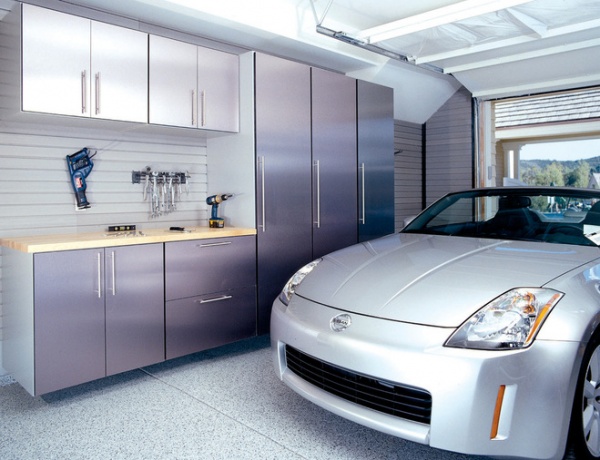
Garage cabinet systems have similar dimensions to those in kitchens. You can buy base units that are 24 inches (61 centimeters) deep, but some come in depths of 12 or 18 inches (30 or 45 centimeters) as well. Coordinate these with the dimensions of your car, which are easy to find. Go to the manufacturer’s website for your make. Find your exact model and look for the specifications. Write down the overall length and width, including the mirrors. Once you have those, you will know how much space you can use for storage.
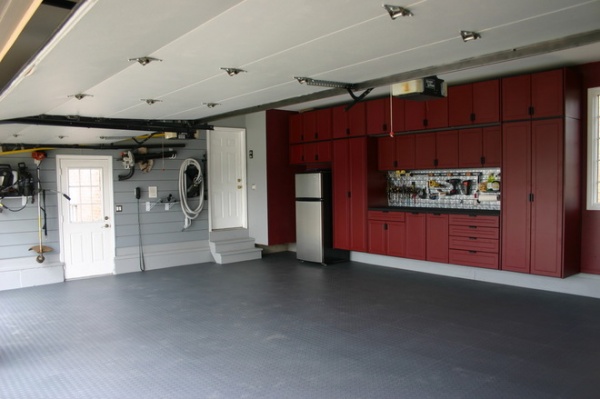
This photo shows two doors. The one on the left opens to the exterior and is flush with the floor of the garage. The door on the right requires three steps up because it goes directly into the interior of the house. Steps with 6-inch (15-centimeter) risers and a platform or stoop are ideal; it is best to keep risers under 8 inches (20 centimeters).
There may be local code restrictions on this also, so be certain to follow those.
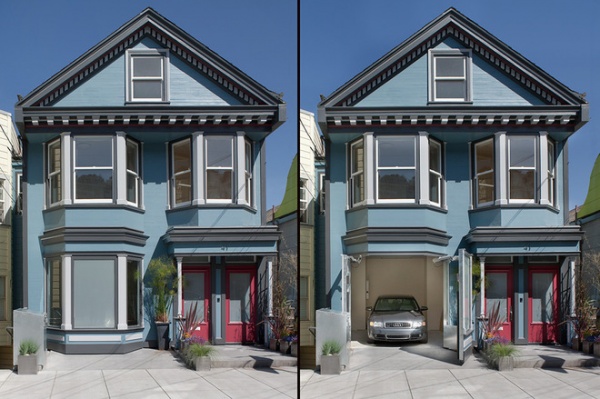
Another dimension to consider for your garage is its relative height to the finished front view of your house. To not take away from the architecture and streetscape of this San Francisco house, the architects have created a garage disguised by the building. While this solution is likely on the upper end of budget parameters, you should consider how the dimensions of your garage will affect the aesthetics of your house. Using single doors rather than double, setting the face of the garage back from the primary elevation and blending the design of the doors into the building are just some tricks to keep your garage proportions from overtaking your house.
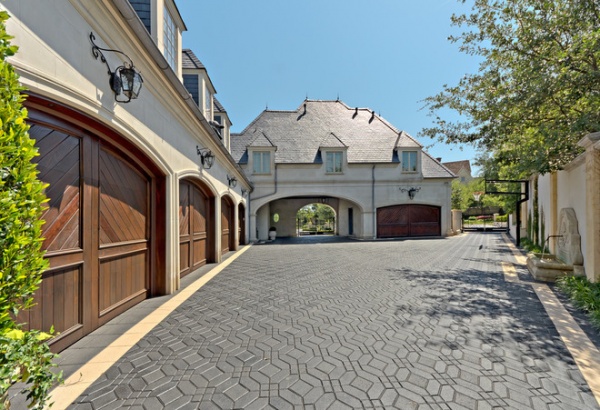
Driveways to the garage can eat up considerable space on your property. Balancing one with your home’s design takes careful planning. Most will simply be in a straight line from the street to the garage, but if you are planning a motor court similar to this house, consider that the turning diameter for a car is between 40 and 50 feet (12.2 and 15.2 meters). You need at least 25 feet (7.6 meters) to comfortably back up and then begin a turn to move forward.
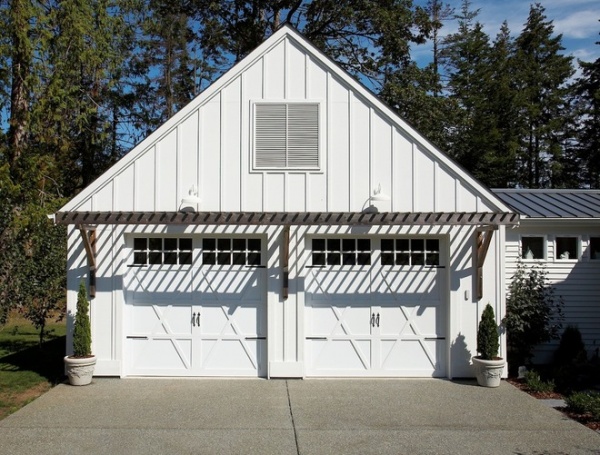
Details and good proportions dignify the garage of this minimalist traditional house. Two single doors often look better than one wide door with this type of architecture, because the proportions coordinate better.
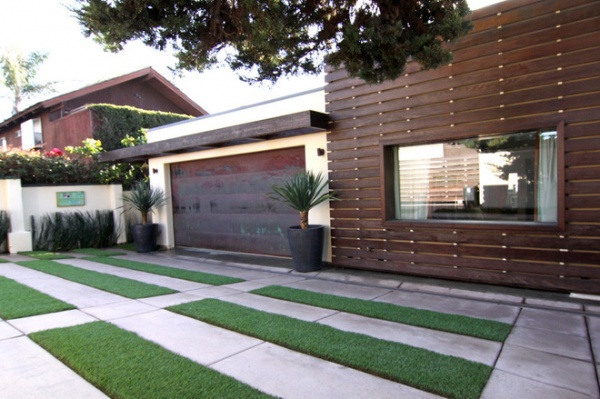
Save double doors for contemporary architecture in which horizontal lines dominate the theme.
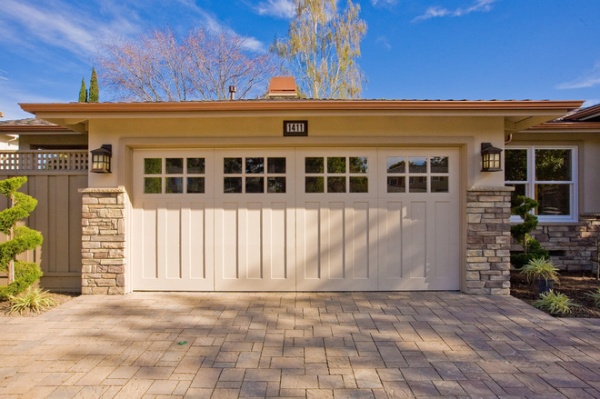
When a double door must be used on a traditional house, consider a design like this one. The multipane windows and appropriately proportioned panels complement the home’s design.
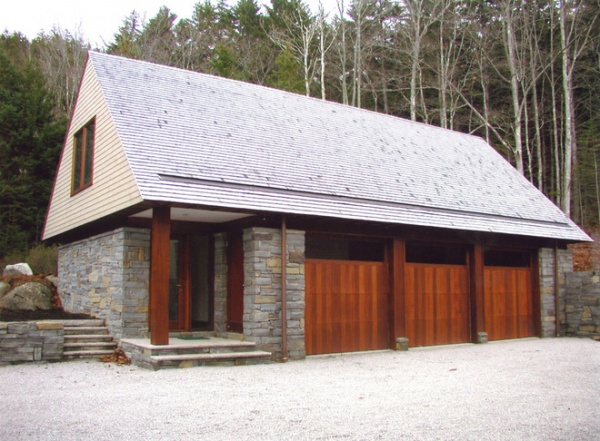
Though this design is for three single garage doors, the execution of detail helps it read as one opening and complements the contemporary architecture.
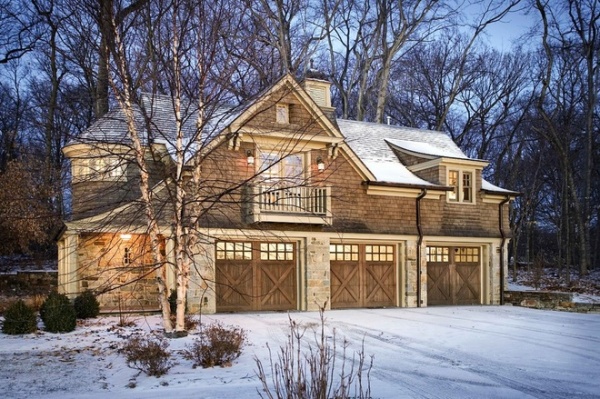
Three broad and generously spaced garage doors in this design flatter and confirm the solidity necessary to support the upper floor of this traditional house.
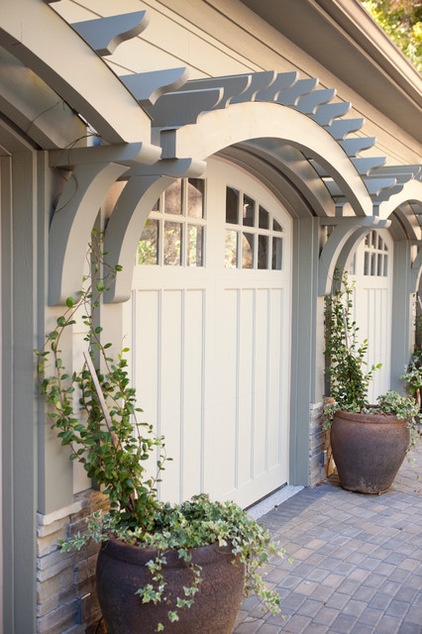
Be generous with details around garage doors. They are usually prominent features on a house simply because of their scale. You want to complement your architecture while paying close attention to the scale of other elements on the house.
Common Vehicle Dimensions
Vans and SUVs:
Width: 6 to 7 feet (1.8 to 2.1 meters)
Length: 16 to 19 feet (4.9 to 5.8 meters)
Height: 5 to 6 feet (1.5 to 1.8 meters)
Large and luxury cars:
Width: 6 to 6½ feet (1.8 to 1.9 meters)
Length: 16 to 18 feet (4.9 to 5.5 meters)
Height: 4½ to 5 feet (1.4 to 1.5 meters)
Compact and sports cars:
Width: 5 to 6 feet (1.5 to 1.8 meters)
Length: 14 to 16 feet (4.3 to 4.9 meters)
Height: 4 to 5 feet (1.2 to 1.5 meters)
Note: Conversions to metric dimensions are approximately translated from standardized U.S. dimensions. Each country can be unique in their standards. Investigate the customs in your locale or work with a design pro before making commitments.












